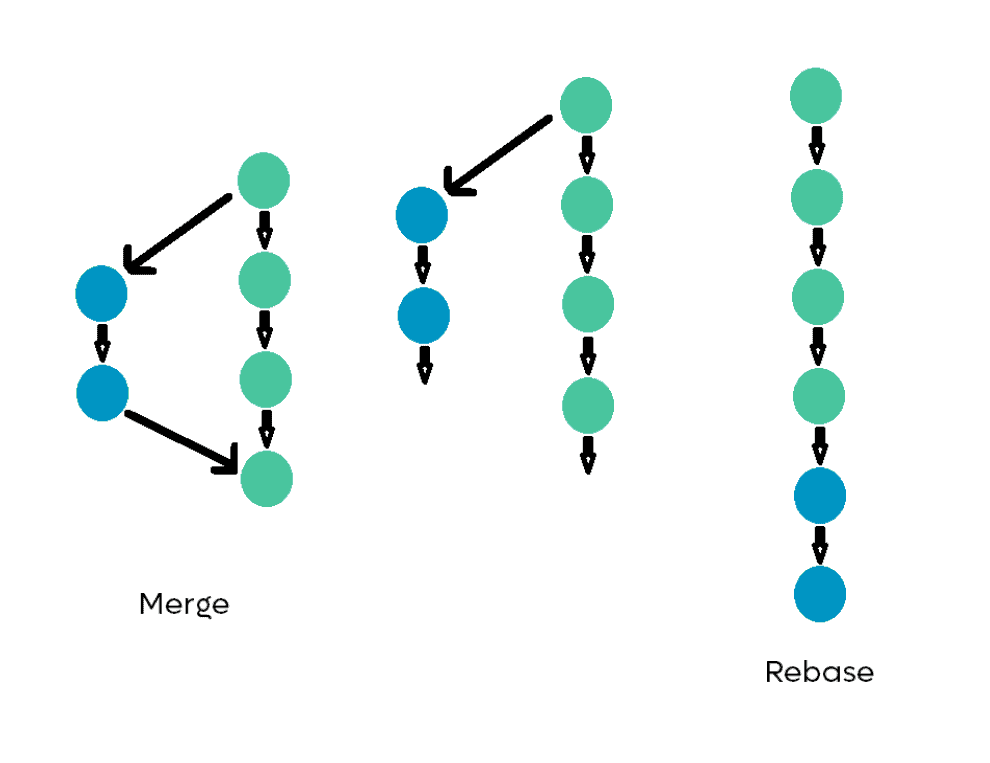

- Rebase on master git how to#
- Rebase on master git install#
- Rebase on master git code#
Suddenly I found that the last commit still left some small tails unfinished, such as a line of comments that we forgot to delete or a small clerical error. We just made a commitment, but haven’t pushed to the public branch yet. Using git commit -amend is more convenient when we only want to amend the most recent commit. The execution process is shown in the following figure: Switch back to the master branch and perform a fast-forward merge: git checkout master & git merge fature. To merge updates from the master branch: git merge master. Switch to the feature branch: git checkout feature. Now we will use the merge and rebase respectively to integrate the B and C commits of the master branch into the feature branch, add a commit F to the feature branch, then merge the feature branch into the master, and finally compare the commits formed by the two methods differ in history. Suppose we have the following branches: D-E feature / A-B-C master 
The above scenarios can also be achieved using merge, but using rebase allows us to maintain a linear and cleaner commit history.
We want to integrate the latest changes from master in the feature branch. The remote master branch later merged some new commits. We pulled a feature branch from the master branch for feature development locally. The following usage scenarios are common in most Git workflows: Rebase is often used to rewrite commit history. The essence of the rebase operation is to discard some existing commits, and then correspondingly create some new commits that are identical in content but are actually different. We can also understand the above as changing the base of the Feature branch from commit A to commit C, which looks like the branch was created from commit C, and commits D and E.īut actually, this is just “looking”, internally Git copies the contents of commits D and E, creates new commits D’ and E’ and applies them to a specific base (A→B→C).Īlthough the new Feature branch looks the same as before, it is made up of brand new commits. Then compare the previous commits (D and E) of the current branch relative to the ancestor commit, extract the corresponding modifications and save them as temporary files, and then point the current branch to the commit Cpointed to by the target base Master.įinally, using this as the new base end, the modifications previously saved as temporary files are applied sequentially. The execution process of rebase is to first find the nearest common ancestor commit A of these two branches (that is, the current branch Feature, the target base branch Master of the rebase operation). In order to keep the commit history clean, we can switch to the Feature branch to perform the rebase operation: git rebase master Now for some reason, for example, the development of new features depends on commits B and C, and we need to integrate the two new commits of Master into the Feature branch. Then Master added two new commits B and C, and Feature added two new commits D and E. Use this with caution, especially when working with other developers, as force push is destructive.Īnd we are done! A very easy way to rebase and squash all your commits using VS Code.Suppose we create a Feature branch from Master’s commit A for new feature development, then A is the base end of Feature. In your version control panel, click on the kebab menu (3 dots) and under the Pull, Push menu, choose Push (Force). 
However, now we must force push to remote. Write your new message, and save and close the file to continue.
Rebase on master git code#
You will then be presented with a screen in VS Code to reword your commit message.Once you have your commits ready, we can click the Start Rebase button.

We are going to squash every commit, and reword the last one into a good commit message.
You will then see the codelens rebase screen, where you can choose what to do with each commit. Type in git rebase -i main, where main is the branch you are rebasing onto. Switch to your feature branch (the branch you have been working on). Ensure your local branch you are rebasing onto (in our case, main) is up to date. Git config -global core.editor "code -wait" Optional but recommended: set VS Code as your git editor: In settings, search for "git allow force push" and check the box You will also need to enable "force push": Rebase on master git install#
You will need to install this VS Code extension:
Rebase on master git how to#
This tutorial will show you how to use VS Code to visually do this process. I primarily use rebase to squash my commits before I PR my branch into main. Git rebase is a powerful, albeit confusing tool.








 0 kommentar(er)
0 kommentar(er)
